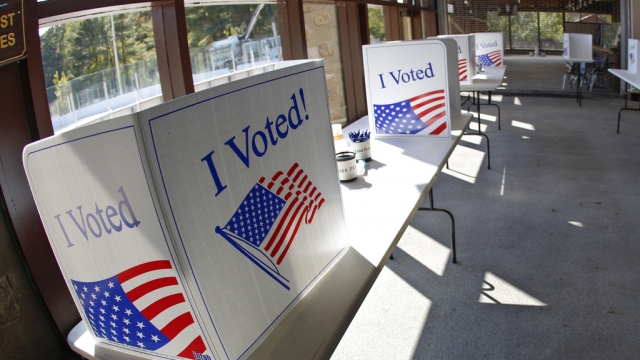One week after the first Republican presidential debate and one week after former President Trump's Georgia mugshot was released, not much has changed in the race for president.
RealClearPolitics, which averages all the major polls, still has the former president up around 40 points nationally in the race for the Republican nomination.
However, when the general election comes more into focus, something unique in 2024 appears to be happening: a historically low number of actual swing states.
SEE MORE: Who's in the race for the White House? Meet the 2024 candidates
Focus on the swing states
With election coverage, television networks can buy fancy touchscreens and build amazing graphics, but at the end of the day, elections are about coloring in a map.
Some states have been colored red for years. Others have been blue for decades.
But in every election, there are toss-up states, colored purple or yellow to signal that they can go any party's way.
"Now a lot of this is set in stone regardless of who the parties nominate," said Amy Walter. She runs the nonpartisan Cook Political Report, which analyzes races from coast to coast.
How It Started (August 1995 Electoral College Ratings)
How It’s Going (August 2023 Electoral College Ratings) pic.twitter.com/n5XqAt02Ki
— Amy Walter (@amyewalter) July 27, 2023
Recently she had an observation.
In 1995, the Cook Political Report listed 12 states as toss-ups. Even California was included. Nearly 30 years later, the same report is, for now, only listing four states as true toss-ups: Georgia, Arizona, Pennsylvania and Wisconsin.
"If you go back in the entirety of pretty much the 20th century, we've never had a map as determinative as this electoral map is today," Walter said.
Take for instance Florida. For years, many analysts would go into elections coloring it yellow.
This election cycle it begins as a soft shade of red after voting for Republicans for president and for governor in recent years. The same is true for Ohio.
Democrats, meanwhile, have gained ground in places like Virginia, Michigan and Colorado in recent cycles. Those states begin the 2024 election campaign, according to the Cook Political Report, colored a light shade of blue.
"It speaks to the fact that we have become a much more polarized country where people have put on the red and blue jerseys and they don't take them off," Walter said.
SEE MORE: Ramaswamy: Most candidates are 'anti-something. I'm pro-American'
If you live in a swing state, all of this means you are likely to get bombarded with more commercials, door knocks, phone calls and campaign visits than you have in recent years.
If you live in a state that has lost swing status, Walter says there is a concern about a lack of voter engagement. After all, if someone doesn't think their vote will matter as much, there is a greater chance that voter may stay home.
"The campaigns are spending their money in fewer places," Walter said.
Of course, just because some political analysts in D.C. aren't considering as many states competitive, that doesn't mean political parties are giving up.
Democrats and Republicans will work to create more toss-up states between now and this time next year.
Not to mention, there are down-ballot congressional races to worry about. For instance, Democrats aren't competing much in Montana for the presidential election but are planning to spend millions to try to reelect Democratic Sen. Jon Tester.
Trending stories at Scrippsnews.com




